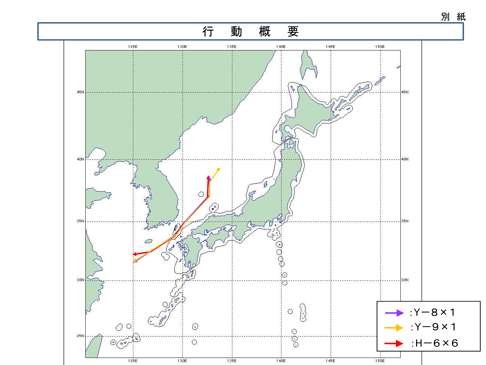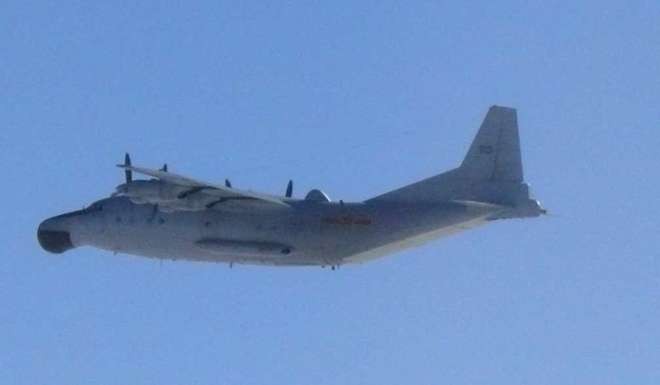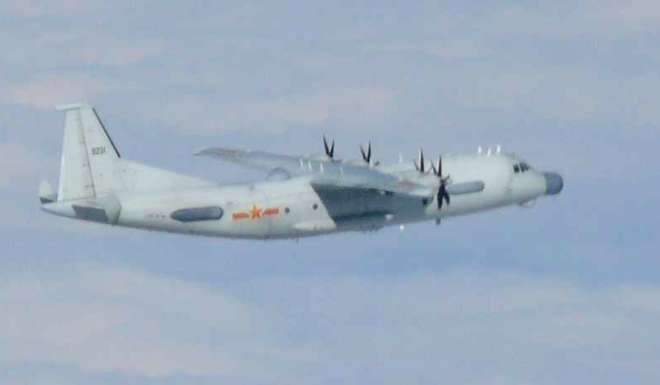
Japan, South Korea scramble fighter jets after eight Chinese warplanes fly over Korea Strait
Move by Chinese aircraft, including bombers, signals Beijing’s determination to step up routine presence in waters in which China has interests, experts say

At least eight Chinese warplanes were spotted flying over the Korea Strait close to Japanese islands on Monday, prompting Japanese and South Korean air forces to scramble fighter jets.
The move signalled Beijing’s determination to step up its routine presence in any waters in which China had an interest, observers said.
The People’s Liberation Army aircraft flew over the eastern channel of the Korea Strait, towards the Sea of Japan, turned around to the north of Oki Island, in Shimane prefecture, and then flew back over the East China Sea, NHK TV reported, citing Japan’s Ministry of Defence.
The aircraft were six H-6 strategic bombers, one Shaanxi Y-8 early-warning plane and a Shaanxi Y-9 intelligence-gathering aircraft.
Although Japanese fighter jets were scrambled, the Chinese aircraft did not violate Japanese airspace, the Japanese ministry added.
However, the Chinese aircraft did fly within South Korea’s air defence identification zone, near Socotra Rock – a submerged rock located off the southern coast of Jeju Island – which China refers to as Suyan Rock, Yonhap news agency said.
This led South Korea to scramble 10 of its fighter jets, including F-15Ks and KF-16s, in the area and send a warning signal to the Chinese planes, the report said.
PLA Navy spokesman Liang Yang said air units from the navy conducted coordination training with the fleet passing through the Sea of Japan on Monday. The exercise was routine training under its annual plan, and did not target at any specific nation, CCTV quoted Liang as saying.


China’s muscle-flexing comes after its only aircraft carrier, the Liaoning, was seen cruising into the Western Pacific Ocean through the waterway between Okinawa and Miyako Island on December 25, which Chinese media described as breaking the so-called first island chain blocking the Chinese military from entering deep blue water.
On January 3 the carrier’s J-15 “Flying Shark” fighter jets made a high-profile South China Sea debut.
Monday’s flight was the first time since August that an H-6 strategic bomber had been detected flying over the strait, the Japanese ministry said.
Analysts said Monday’s flights marked a new phase that would see Beijing engage more deeply in waters in which it had an interest.
“It’s rare for China to dispatch so many advanced bombers at the same time,” Beijing-based naval expert Li Jie said. “It signals that China will not only step up its presence in the Western Pacific, but also in the Sea of Japan and other waters it has interests in.”
Global Times quoted Beijing air defence expert Fu Qianshao as saying Monday’s flights had been “normal routine training, and Japan panicked and overreacted, which shows Japan may have wanted to hype the event and act as a troublemaker”.
Tensions between China and Japan have intensified since Beijing set up an air defence identification zone over the East China Sea in November 2013, following Japan’s nationalisation of the disputed Senkakus Islands, which China calls the Diaoyu Islands.
Only this month, Japan scrambled its fighter jets after six Chinese aircraft were seen flying over the Miyako Strait, near Okinawa.
China’s air force said in mid-September it would be organising “regular” exercises that flew past the first island chain – a strategically important entryway into the Western Pacific, which includes Japan’s Ryukyu Islands and Taiwan.
While China and Japan are discussing establishing a maritime and air communications protocol intended to prevent accidental clashes between aircraft and vessels, the implementation of the mechanism has been stalled since Japan nationalised the Senkakus in 2012.